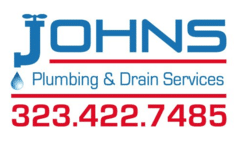Clogged drains are a common problem that homeowners face. They are not only annoying but can also be a potential health hazard. Clogs can cause water to back up and overflow, leading to water damage and mold growth. It is essential to keep your drains clean and clear to prevent clogs from occurring. In this article, we will discuss some effective and easy-to-follow DIY drain cleaning tips for homeowners.
Common Causes of Clogged Drains
Before we dive into the tips, it’s essential to understand the common causes of clogged drains. The most common cause of clogs is the buildup of hair, soap scum, and other debris in the drainpipe. Food particles, grease, and oil can also cause clogs in kitchen sinks. Flushing items like baby wipes, cotton swabs, and feminine hygiene products down the toilet can lead to toilet clogs.
Other causes of clogged drains include tree roots that grow into sewer lines, incorrect installation of pipes, and aging pipes that corrode and collapse. If you have an older home, it’s essential to have your pipes inspected regularly to prevent clogs and other plumbing issues.
The Importance of Regular Drain Maintenance
Regular drain maintenance is crucial in preventing clogs from occurring. It’s best to clean your drains every three months to keep them running smoothly. You can use a combination of DIY drain cleaning tips and natural cleaners to maintain your drains.
DIY Drain Cleaning Tools and Supplies
Before we jump into the tips, let’s discuss the tools and supplies you’ll need for DIY drain cleaning. You’ll need a plunger, a drain snake, and natural cleaners like baking soda, vinegar, and lemon juice.
A plunger is a must-have tool for any homeowner. It’s an effective way to clear clogs in sinks, toilets, and shower drains. A drain snake is a long, flexible tool that can reach deep into the drainpipe to clear stubborn clogs.
Natural cleaners like baking soda, vinegar, and lemon juice are safe and effective alternatives to harsh chemical cleaners. They can break down clogs and remove buildup without damaging your pipes.
How to Use a Plunger Effectively
Using a plunger is an effective way to clear clogs in sinks, toilets, and shower drains. To use a plunger, follow these steps:
- Fill the sink, toilet, or shower with enough water to cover the plunger’s bell-shaped head.
- Place the plunger over the drain and press down firmly to create a seal.
- Push and pull the plunger up and down rapidly for about 20-30 seconds.
- Remove the plunger and check if the water is draining properly.
If the water is still not draining correctly, repeat the process a few more times. If the clog persists, try using a drain snake.
Using a Drain Snake to Clear Blockages
A drain snake is a long, flexible tool that can reach deep into the drainpipe to clear stubborn clogs. To use a drain snake, follow these steps:
- Insert the snake into the drain until you feel resistance.
- Turn the handle clockwise to advance the snake further into the drain.
- Continue turning the handle until you feel the snake break through the clog.
- Slowly pull the snake out of the drain while continuing to turn the handle.
If the clog persists, repeat the process a few more times. Be sure to dispose of any debris that comes out of the drain properly.
Natural Drain Cleaning Solutions
Natural cleaners like baking soda, vinegar, and lemon juice are safe and effective alternatives to harsh chemical cleaners. They can break down clogs and remove buildup without damaging your pipes. Here are some natural drain cleaning solutions you can try:
- Baking soda and vinegar: Pour 1/2 cup of baking soda down the drain, followed by 1/2 cup of vinegar. Cover the drain with a plug and let the mixture sit for about 30 minutes. Flush the drain with hot water.
- Lemon juice and baking soda: Mix 1/2 cup of baking soda with 1/4 cup of lemon juice. Pour the mixture down the drain and let it sit for about 30 minutes. Flush the drain with hot water.
- Salt and baking soda: Mix 1/2 cup of salt with 1/2 cup of baking soda. Pour the mixture down the drain and let it sit for about 30 minutes. Flush the drain with hot water.
Preventing Future Clogs
Preventing future clogs is essential in maintaining clean and clear drains. Here are some tips to prevent clogs from occurring:
- Dispose of food scraps and cooking oil in the trash can, not the sink.
- Use a drain catcher to catch hair and other debris in the shower and bathroom sinks.
- Don’t flush items like baby wipes, cotton swabs, and feminine hygiene products down the toilet.
- Have your pipes inspected regularly to prevent clogs and other plumbing issues.
When to Call a Professional Plumber
If DIY drain cleaning methods do not work, it’s best to call a professional plumber. A plumber can diagnose and fix plumbing issues that require specialized tools and expertise. It’s also essential to call a plumber if you notice signs of a more severe plumbing problem, such as water damage, foul odors, or sewage backups.
Conclusion: Keeping Your Drains Clean and Clear
Clogged drains can be frustrating to deal with, but with the right tools and techniques, you can keep your drains flowing smoothly. Regular drain maintenance, DIY drain cleaning tips, and natural cleaners can help prevent clogs from occurring. Remember to dispose of waste properly and have your pipes inspected regularly to prevent plumbing issues. If DIY drain cleaning methods do not work, don’t hesitate to call a professional plumber. By following these tips, you can keep your plumbing in top shape and avoid costly repairs down the road.

















